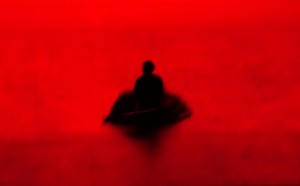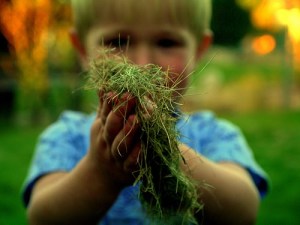Photography Tips: Aperture, ISO, Shutter Speed Explained!
Buffaloz Photography Training: Free Online Photography Tips, Tutorials, and Training
Aperture, F/stop and Depth of Field Explained!
“Use a wider aperture,” or, “What f-stop are you using?” So, What is an f-stop? What is Aperture?
For those who want to learn more about topics like aperture, online universities have
photography courses.
Aperture is a term for a measurable expression of how much light is entering a camera lens. F/stop is a number assigned to a specific Aperture.
All cameras have a lens which light passes through to help record the image. However, to get a proper
exposure so you do not have underexposure or overexposure, light must come in through the lens in the
correct amount needed. The f-stop(aperture) on a camera helps control the exposure.
The “F” in f-stop stands for focal length. The focal length divided by the diameter of the pupil ,
or the amount of light entering the lens is how the f-stop is determined. The numbers f/2 or f/16 are
expressions of f-stops. The number denotes how wide the opening in the aperture is. The aperture
is an opening behind the camera lens. The aperture works like the pupil of the eye. It gets wider when
there is not a lot of light and smaller when there is more light. Test this out. Get a flashlight and go
to a mirror. First look into the mirror at the black part or pupil of your eye. Notice the size. Now turn
on the flashligtht and point it at your eye. While looking in the mirror you will notice that your pupil
gets smaller. This is exactly how an apeture works. The more light, the smaller the pupil of your eye, the
less light the wider the pupil of your eye. Now here is the weird part. When you apeture is open wider, the
f-stop will be a small number like f/5.6 or f/2(if you have a fast lens). If the apeture is smaller, you will
have a number like f/16 or f/22. The Aperture also controls the Depth of Field in your photo. To put it simply, Depth of field controls what is in focus in your photo. If you use a wide Aperture like F/1.4 you will have shallow Depth of field, or what is in focus will be shallow. Here is an example of what shallow Depth of field looks like.
If you use a small Aperture like f/22, you will have a photo where the depth of field is not so shallow. Below is an example.
There are other things that control depth of field like the length of your lens and the distance you are from your
subject but that is another lesson. Anyhow, You should get the general point of this lesson. If you have questions or need more help understanding, leave a comment below and I will do my best to answer it. Thanks! Hope you enjoyed this short lesson!!
Depth of Field in a nutshell!!!!
So, have you ever wondered how to get blurred backgrounds when taking photos of a person. Have you ever wondered how professional landscape photographers get their shots so sharp? Well, You are about to learn how to control what is in focus and what is not when you are taking a photo. You will also learn when it is appropriate to used small aperture versus large aperture.
To start out you need to know what an aperture is. Basically, an aperture is a hole in your lens that controls how much light hits your camera’s sensor. An aperture works like the pupil of your eye. To test this theory, go into your bathroom( I know, I could tell a joke here, but I won’t) and look in the mirror. Look at the size of your pupil. Now turn off the light and wait a few seconds. Quickly turn on the light and your pupil will be larger. As your eye’s adjust, your pupil will become smaller. The aperture in your camera works the same way. When you are in a low light situation, the aperture needs to be larger to let in the correct amount of light( your shutter speed also controls this, but that is a different lesson). When you are shooting
on a bright day, you aperture needs to me smaller. Got it? If not leave a comment so I can clarify more.
Anyhow, apertures are given numbers to help with standardization. F/2 is a large aperture(lets in lots of light) and F/22 is a small aperture(lets in a small amount of light).
Here is a basic scale of apertures:
f/1.4,f/2, f/2.8,f/4, f/5.6, f/8, f/11, f/16, f/22, f/32
Most lenses these days start around f/4 and go to f/22, but high quality lenses can go further. They are usually more expensive(not alway, but most of the time).
So what is so cool about a lens that goes to f/2?
Well, f/2 will give you shallow depth of field.
On the other end of the scale, f/22 will make almost everything in focus.
Let me show you what I mean.
So, how do you use this in everyday photography you ask?
If you are taking a photo of you kid outside at the park and there is a lot of distracting stuff in the background(like weird looking parents and some goofy guy) you will want to use a f/4 or f/5.6. This will create shallow depth of field so the background will be out of focus.
If you are shooting a close up portrait, you will probably want to use f/8 so that your subject is in focus and the background is still blurred. For a long time most portrait photographers always shot at f/8, but in the last few years this has changed. You can decide for yourself how you feel about this.
If you are shooting a landscape, you probably want to use f/22 so everything is in focus and sharp!
Notice that I said probably in all the senerios above? There are always exceptions. As you become more advanced you will get better at choosing the f/stop that is appropriate.
Just a note: when you are using a small aperture(f/11-f/22) you might need to use a tripod because at small apertures you have to use a longer shutter speed. We will talk about this soon.
P.S. Comments are appreciated!!!
Thanks,
Brian
ISO, Shutter Speed and Aperture. Things every photographer should understand
Thanks!!!!
Was this video helpful?
Please leave a comment:)
When Blur is a Good Thing. Dedicated to Head Bangers.
So, most of the time when a photo is blurred it is a bad thing. Well, would you say I was crazy if I said sometimes blur is a good thing? I knew it, you think I am crazy. I am a bit, I mean I can act weird sometimes. My wife says….uh well, let’s leave it at that.
Anyway, I believe that blur can be very effective if used in the right situation. Sometimes you find yourself thinking, “What am I going to do? I forgot my flash and now my photos won’t turn out.”
That is what happened the other night. I went to see Korean dancers. I really could have banged my head against the seat in front of me, but then the police would have asked me to leave. I had forgotten my flash. Instead I just figured I would make the best out of it. This is what I got:
2nd Lesson on F-stops: Shallow Depth of Field.
A while ago I had a visitor who was wanting to know more about when to use f-stops. I covered what f-stop to use when taking a landscape(f/11-f/22). Now I am going to show you when you want to use a larger aperture. The photo below was taken using f/2.8. Some lenses will not have f/2.8. The might only go to f/4. If you have a camera that has f/4 as the largest aperture, substitute f/4 for f/2.8. Anyway this is my little boy holding grass (not the kind you smoke) ha ha ha. I used f/2.8 because I wanted to throw him out a focus and bring attention to the grass he was holding. So, when you want attention brought to a subject and you want shallow depth of field, use a large aperture like f/2.8 -f-5.6. The resulting style is sometimes referred to as Bokeh.
Just for some basic info, when shooting a portrait of a person, most pro photographers use f/8. Why you ask? Because f/8 gives enough depth of field to cover the head of a person and throw the background out of focus. Hope you liked this tutorial. If you have any questions let me know and I will do my best to answer them. Remember to bookmark this page so you can come back often. Thanks 🙂
Aperture: What is it?

How to Photograph a Real Estate Agent and Get Paid for it!!!!



What’s Depth of Field? Let’s Not Be Shallow.










Recent Comments